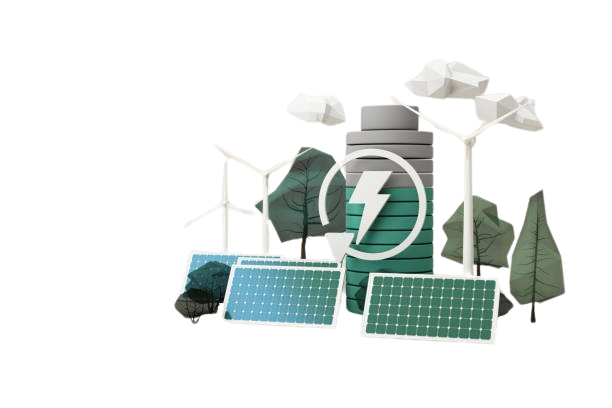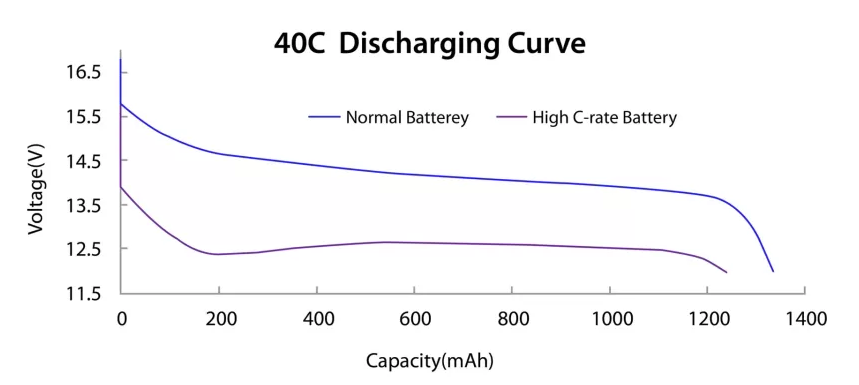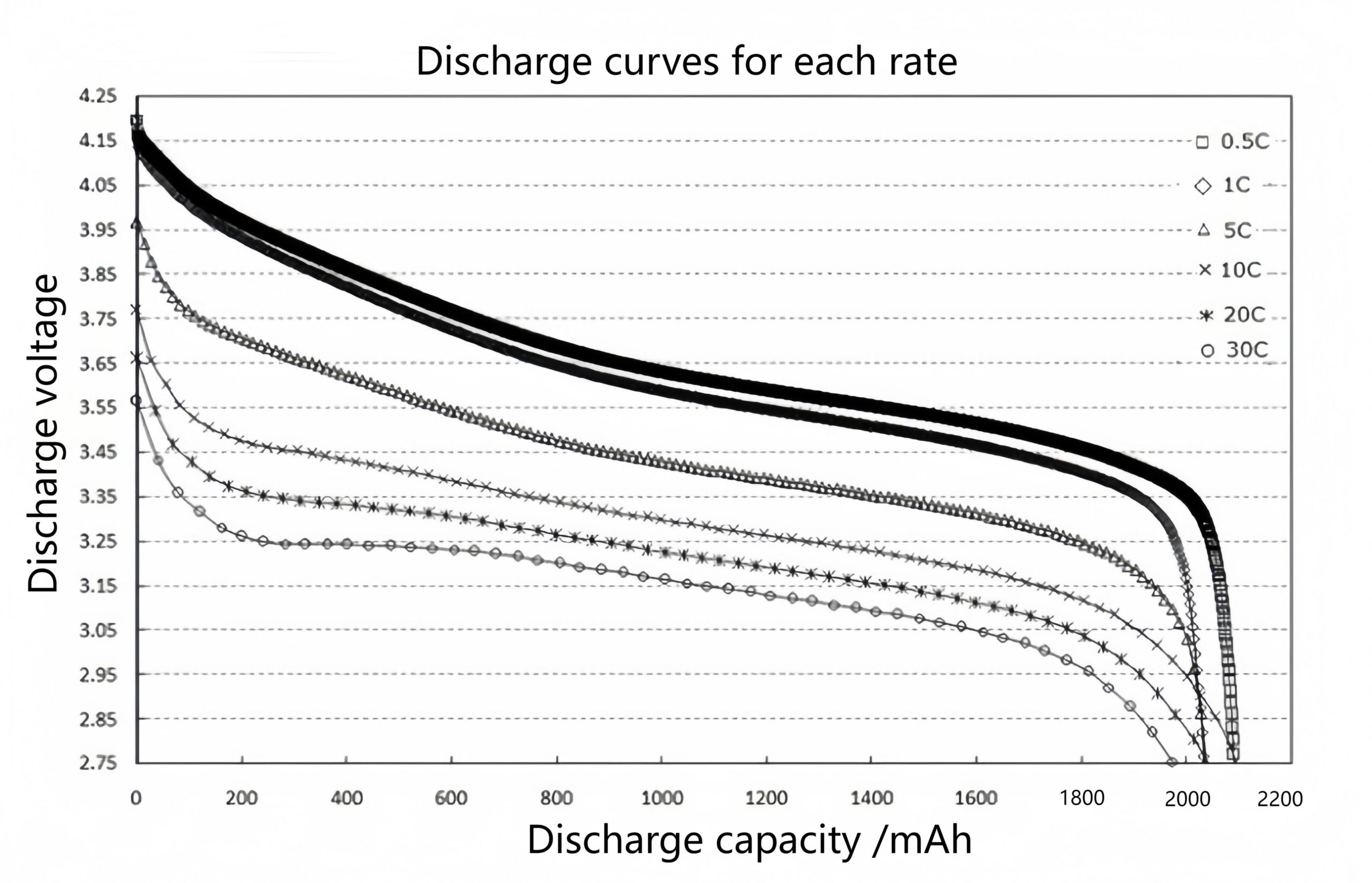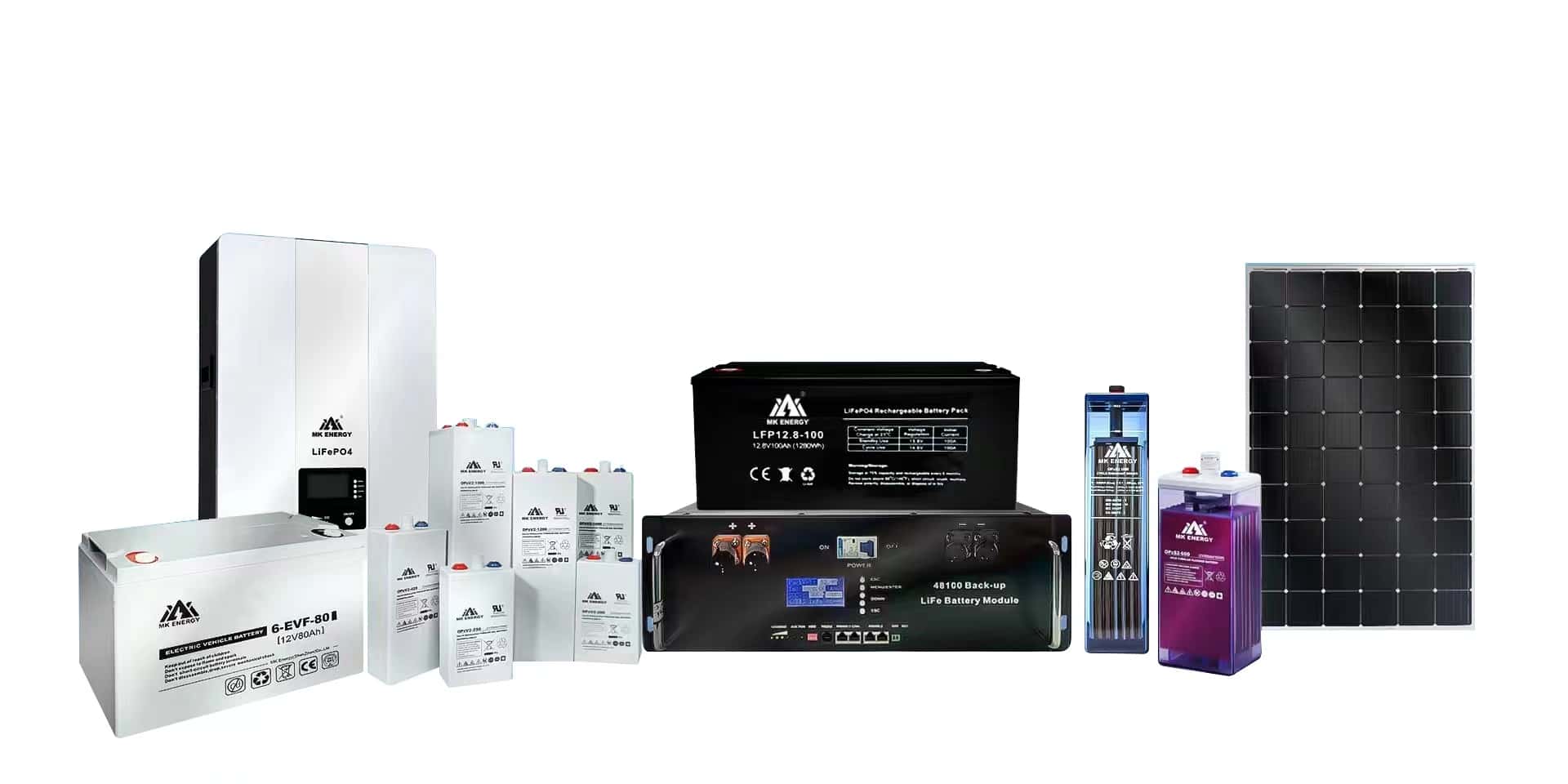The magnification rate refers to the current value required when the battery discharges its rated capacity within a specified time. In terms of value, it is equal to a multiple of the battery’s rated capacity. It is usually represented by the letter C. Generally speaking, 0.2~2c is a capacitive lithium battery, referred to as LCR. 2C and above are power lithium batteries, referred to as LNR/LMR.
High-rate lithium batteries generally refer to lithium-ion batteries with a continuous discharge capacity of ≥3C. They are characterized by high-rate discharge and mainly rely on the movement of lithium ions between the positive and negative electrodes to work. At present, high-rate lithium batteries are mainly used in RC racing cars, power tools, electric racing cars, electric umbrella cars, formula racing cars, electric skateboards, electric pacemakers, jump starters, portable power supplies, electronic cigarettes and other fields.
High magnification characteristics
The mainstream of positive and negative electrode systems is lithium cobalt oxide and graphite systems, and the particle sizes of active materials are much smaller than traditional high-capacity systems. Generally, the particle size D50 of lithium cobalt oxide is 5-6um, and the particle size of graphite is 7-8um. The smaller the particle size, the larger the BET and the higher the reactivity. The electrolyte system uses a low viscosity, high lithium salt concentration system with very high conductivity. Isolation membranes are mainly characterized by high porosity and high air permeability.
In terms of auxiliary materials, in order to meet the discharge characteristics of high-rate lithium batteries, more conductive agents need to be added to improve the electronic conductivity of the pole pieces. Usually, the conductive agent is a mixture of multiple conductive agents.
In terms of material systems, in order to achieve rate discharge, the electronic conductivity and ion conductivity must be improved simultaneously. Once both increase, it means that the entire chemical system of the high-rate battery is relatively active, and the faster the chemical reaction occurs, on the other hand, it is easier to cause thermal runaway.
The main difference between high-rate discharge batteries and regular batteries is their discharge rate capability. As shown in the figure below, the curve shows the situation when batteries of the same capacity are continuously discharged at the same current. It can be seen that the discharge voltage of high-rate batteries is higher and the voltage drops smoothly. Because the internal resistance of high-rate batteries is smaller, the higher the battery capacity, the lower the loss during high-current discharge.
High magnification performance
Discharge capacity:
Continuous, instantaneous, cyclic discharge, high and low temperature discharge. If the first charge and discharge takes a long time (usually 3-4 hours), then the electrodes can be brought to the highest oxidation state (fully charged) as much as possible, and the electrodes are forced to the specified voltage during discharge (or use). , or until it automatically shuts down, which can activate the battery usage capacity. However, in daily use of lithium-ion batteries, there is no need to operate like this. They can be charged at any time as needed. When charging, there is no need to charge first, nor does it need to be fully charged. Just like charging and discharging for the first time, you only need to perform 1-2 consecutive operations at intervals of 3-4 months.
Charging capacity:
Charging is an important step for battery reuse. The charging process of lithium-ion batteries is divided into two stages: the constant current fast charging stage and the constant voltage current decreasing stage. In the constant current fast charging stage, the battery voltage gradually increases to the standard voltage of the battery, and then switches to the constant voltage stage under the control chip. The voltage no longer increases to ensure that it will not be overcharged, and the current gradually weakens to the level as the battery power increases. The set value finally completes charging. After repeated use of lithium-ion batteries, the discharge curve will change. Although there is no memory effect in lithium-ion batteries, improper charging and discharging will seriously affect battery performance.
Safety performance:
High-discharge lithium batteries contain volatile electrolytes and a thin separator between the anode and cathode, making them very sensitive to physical damage and thermal stress. Batteries can become damaged if they are overcharged and overdischarged or exposed to extreme temperatures. MK pays special attention to the safety features of its products, which are mainly reflected in the following four aspects:
Battery cell selection
We strictly select lithium-ion battery cell models for high-rate discharge battery solutions. These batteries offer excellent chemical stability and thermal management, reducing the risk of overheating or thermal runaway.
Battery structural design
The structural design of the battery also affects safety. We generally adopt a stacked plate structure for high-rate discharge lithium polymer batteries, which not only ensures safety, but also effectively reduces internal resistance and enhances discharge performance.
Battery Management System (BMS)
A well-designed BMS is the foundation for lithium polymer battery safety. It continuously monitors key parameters such as temperature, voltage and current, implementing protection measures to prevent overcharging, overheating and short circuits.
Quality Control
We follow strict quality control processes to ensure that each high-rate discharge lithium-ion battery meets the highest safety standards. This includes thorough testing at every stage of the manufacturing process, from cell selection to final assembly.
Summarize
High-rate discharge lithium batteries provide the best solution for many critical applications that often require fast power delivery. Battery manufacturers ensure product safety through advanced battery design, integrated protection circuits and strict quality management. In addition, its performance indicators, including discharge rate, capacity and energy density, ensure that high-rate discharge lithium polymer batteries can meet the power needs of various devices.
When it comes to enhancing your power-intensive applications, high-rate discharge lithium polymer batteries can be your reliable, efficient choice.




